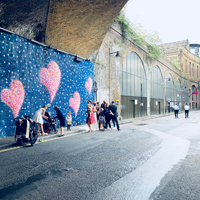Driving in Chester
Summary: Driving in a new country can be daunting. These tips offer insight into what to expect when driving in Chester.
1. Understanding the Driving Rules
Driving in Chester, like the rest of the UK, is on the left-hand side of the road. This can be a significant adjustment for those from countries where driving is on the right. Familiarize yourself with the UK's Highway Code, which outlines all the rules and regulations for driving in the country.
2. Car Recommendation
As Chester is a historic city with narrow roads, a smaller car is often more practical. It's easier to navigate through the city and park. However, if you plan to travel outside the city frequently, a larger car might be more comfortable.
3. Parking in Chester
Parking in Chester can be challenging, especially in the city centre. There are several car parks available, but they can fill up quickly, particularly during peak times. It's advisable to plan your journey in advance and consider using park and ride facilities.
4. Cost of Parking
Parking costs can vary depending on the location and duration. City centre parking tends to be more expensive. However, there are cheaper or even free options available further out, with good public transport links into the city.
5. Driving with an International License
Foreigners can drive in the UK with an international driving permit (IDP) for up to 12 months from the date they last entered the UK. After this period, you will need to exchange your foreign license for a UK one or pass the UK driving test.
6. Getting a UK Driver's License
To get a UK driver's license, you will need to apply to the Driver and Vehicle Licensing Agency (DVLA). The process involves a theory test and a practical driving test. If your driving license is from a country that has a license exchange agreement with the UK, you may be able to exchange it for a UK license without taking a test.
7. Be Aware of Speed Limits
Speed limits in the UK are strictly enforced, and penalties for speeding can be severe. The standard speed limit is 30 mph in built-up areas, 60 mph on single carriageways, and 70 mph on dual carriageways and motorways. However, always check for signs as these can vary.
8. Be Prepared for Roundabouts
Roundabouts are common in the UK, and it's essential to understand how to navigate them. Vehicles already on the roundabout have right of way, and you should always signal your intentions to exit.
About the Author
 Betsy Burlingame is the Founder and President of Expat Exchange and is one of the Founders of Digital Nomad Exchange. She launched Expat Exchange in 1997 as her Master's thesis project at NYU. Prior to Expat Exchange, Betsy worked at AT&T in International
and Mass Market Marketing. She graduated from Ohio Wesleyan University
with a BA in International Business and German.
Betsy Burlingame is the Founder and President of Expat Exchange and is one of the Founders of Digital Nomad Exchange. She launched Expat Exchange in 1997 as her Master's thesis project at NYU. Prior to Expat Exchange, Betsy worked at AT&T in International
and Mass Market Marketing. She graduated from Ohio Wesleyan University
with a BA in International Business and German.
Some of Betsy's articles include 12 Best Places to Live in Portugal, 7 Best Places to Live in Panama and 12 Things to Know Before Moving to the Dominican Republic. Betsy loves to travel and spend time with her family. Connect with Betsy on LinkedIn.





